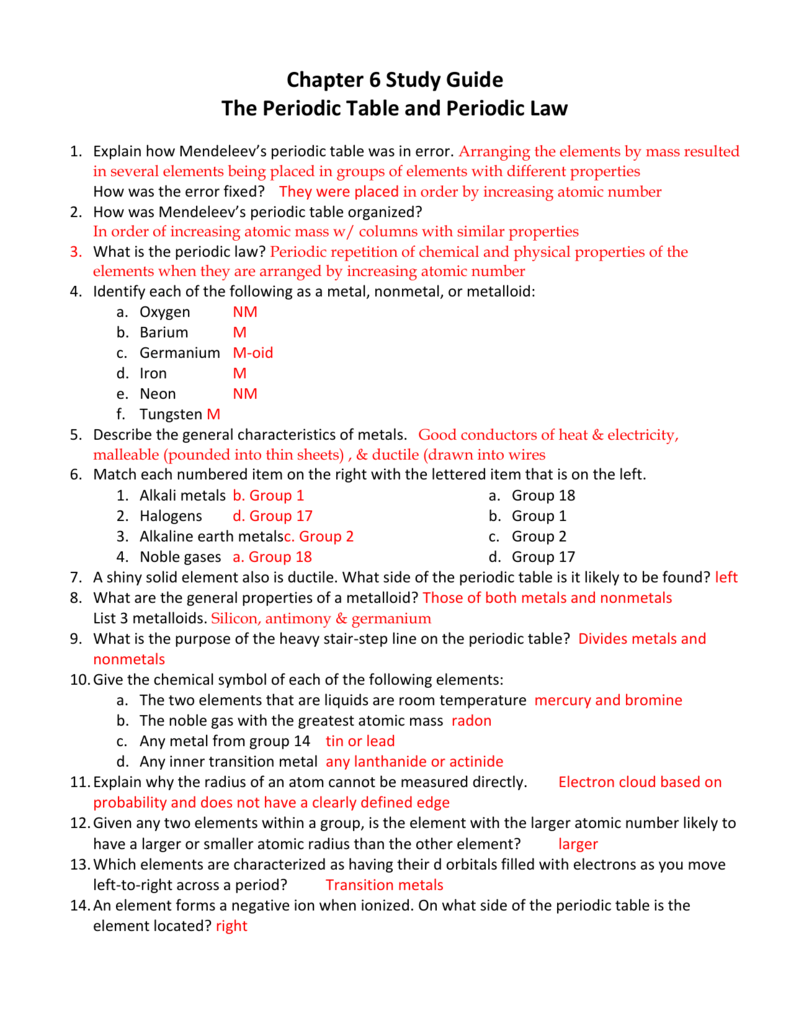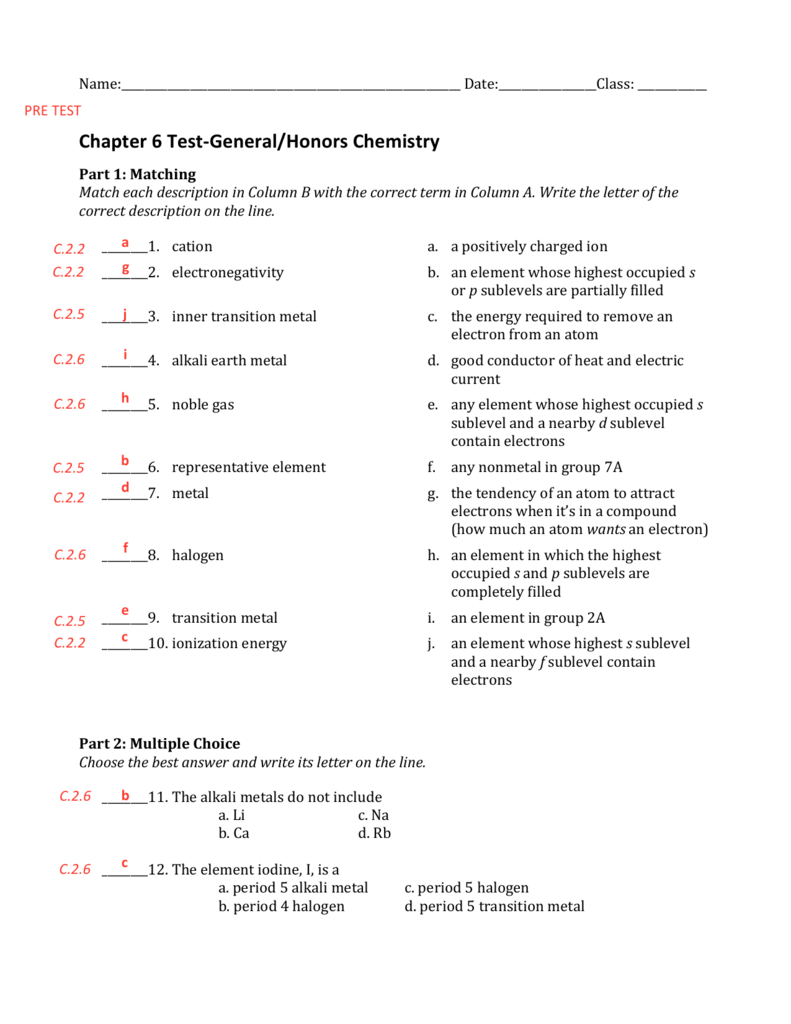

- #Chapter 6 periodic table chemistry tes code
- #Chapter 6 periodic table chemistry tes series
- #Chapter 6 periodic table chemistry tes free
Old Norse svíða ‘to singe, burn’), referring to the area of forest that was burned and cleared to build.

The toponym Schwyz itself was first attested in 972, as Old High German Suittes, perhaps related to swedan ‘to burn’ (cf.
#Chapter 6 periodic table chemistry tes code
The data code for Switzerland, CH, is derived from Latin Confoederatio Helvetica (English: Helvetic Confederation). The Swiss began to adopt the name for themselves after the Swabian War of 1499, used alongside the term for "Confederates", Eidgenossen (literally: comrades by oath), used since the 14th century. The name Switzer is from the Alemannic Schwiizer, in origin an inhabitant of Schwyz and its associated territory, one of the Waldstätte cantons which formed the nucleus of the Old Swiss Confederacy. The English adjective Swiss is a loanword from French Suisse, also in use since the 16th century. The English name Switzerland is a portmanteau of Switzer, an obsolete term for a Swiss person which was in use during the 16th to 19th centuries, and land. The WEF ranks it the fifth most competitive country globally. In 2020, IMD placed Switzerland first in attracting skilled workers. Its cities such as Zürich, Geneva and Basel rank among the highest in terms of quality of life, albeit with some of the highest costs of living. It ranks highly on some international metrics, including economic competitiveness and human development. It has the highest nominal wealth per adult of any country and the eighth-highest per capita gross domestic product. On coins and stamps, the Latin name, Confoederatio Helvetica – frequently shortened to " Helvetia" – is used instead of the spoken languages. ĭue to its linguistic diversity, Switzerland is known by multiple native names: Schweiz ( German) Suisse ( French) Svizzera ( Italian) and Svizra ( Romansh). This identity stretching across languages, ethnic groups, and religions has led many to consider Switzerland a Willensnation ("nation of volition"), as opposed to a nation-state.

Although the majority population are German-speaking, Swiss national identity is rooted in its common historical background, shared values such as federalism and direct democracy, and Alpine symbolism. It has four main linguistic and cultural regions: German, French, Italian and Romansh. However, it participates in the Schengen Area and the European Single Market through bilateral treaties.
#Chapter 6 periodic table chemistry tes free
It is a founding member of the European Free Trade Association (EFTA), but not part of the European Union (EU), the European Economic Area (EEA) or the Eurozone.

Switzerland is the birthplace of the Red Cross, one of the world's oldest and best known humanitarian organisations. It is frequently involved in peace-building processes beyond its borders. It joined the United Nations only in 2002. Switzerland has not fought an international war since 1815. Swiss independence from the Holy Roman Empire was formally recognised in the Peace of Westphalia in 1648. Since the Reformation of the 16th century, Switzerland has maintained a policy of armed neutrality. The Federal Charter of 1291 is considered the country's founding document, which is celebrated on Swiss National Day.
#Chapter 6 periodic table chemistry tes series
The establishment of the Old Swiss Confederacy in the Late Middle Ages resulted from a series of military successes against Austria and Burgundy. The main international airports of Switzerland are located in these cities. These three cities are home to offices of international organisations such as the WTO, the WHO, the ILO, the headquarters of FIFA, the UN's second-largest office, as well as the main office of the BIS. The Swiss population of approximately 8.7 million is concentrated mostly on the plateau, where the largest cities and economic centres are located, including Zürich, Geneva and Basel. The Alps occupy the greater part of the territory. It is geographically divided among the Swiss Plateau, the Alps and the Jura, spanning 41,285 km 2 (15,940 sq mi) with land area comprising 39,997 km 2 (15,443 sq mi). Switzerland is bordered by Italy to the south, France to the west, Germany to the north and Austria and Liechtenstein to the east. The country is a federal republic composed of 26 cantons, with federal authorities based in Bern. Switzerland, officially the Swiss Confederation, is a landlocked country located at the confluence of Western, Central and Southern Europe.


 0 kommentar(er)
0 kommentar(er)
